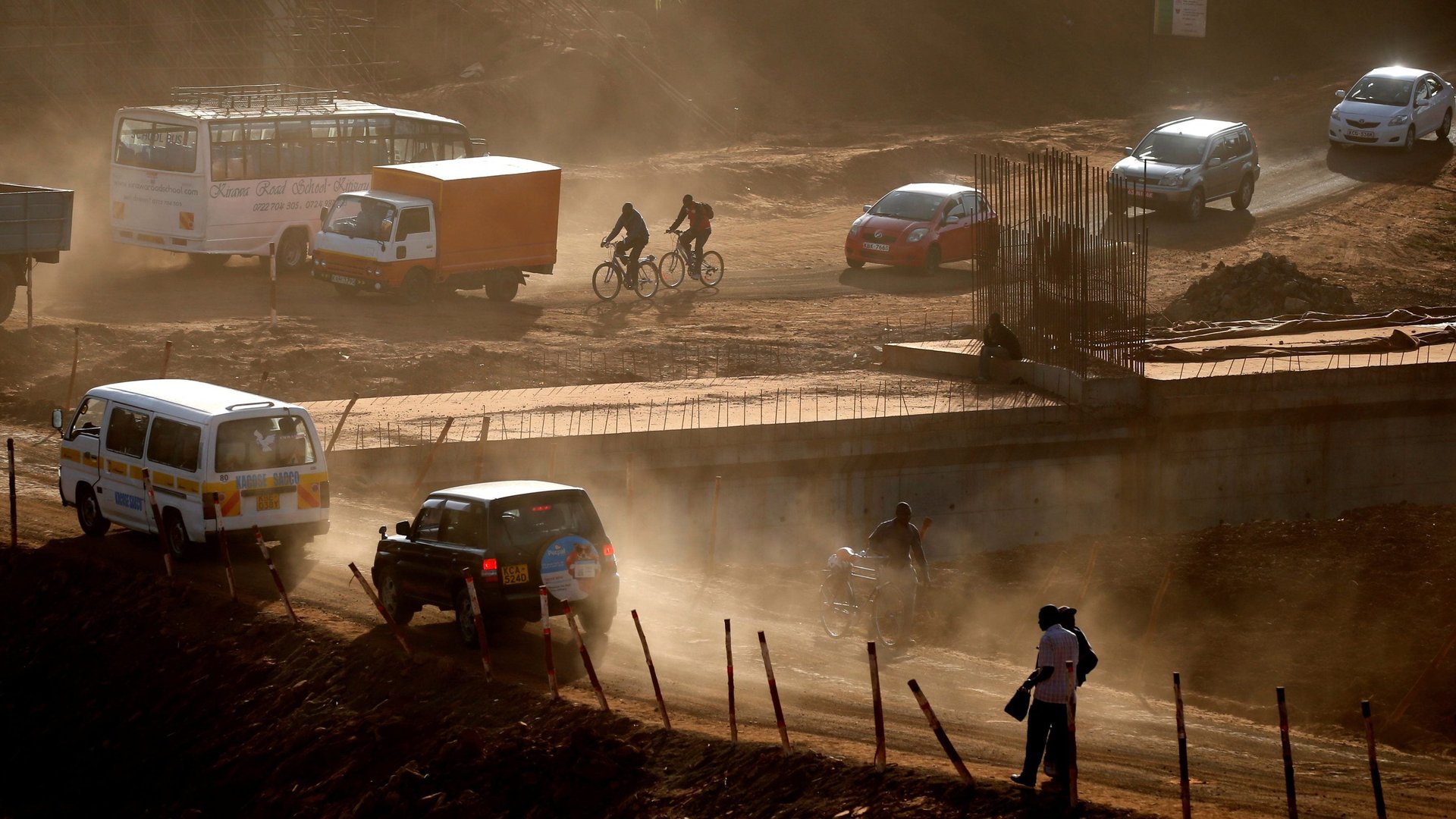A China-US battle for influence in Africa is going to drive up infrastructure lending
The infrastructure shortage in most of sub-Saharan Africa needs a major financing solution but given fiscal constraints and other financial limitations it isn’t likely to come from African governments anytime soon.


The infrastructure shortage in most of sub-Saharan Africa needs a major financing solution but given fiscal constraints and other financial limitations it isn’t likely to come from African governments anytime soon.
The size of the infrastructure gap would require $93 billion a year till 2030 to get the region to where it needs to be, the World Bank has previously estimated. McKinsey thinks it’ll take around $1 trillion. The African Export-Import Bank says power shortages alone subtract 2% to 4% a year from GDP in African countries every year.
The growing demand for infrastructure in already under-resourced African countries comes as these countries face rising urbanization rates while the spread of democracy, even when limited, puts governments under political pressure to deliver on promises (or at least appear to be trying to deliver). It’s a dynamic that has evolved rapidly in development finance since 2008’s financial crisis.
This inability of African governments to fully own their infrastructure ambitions has led to the rise in importance of development finance institutions (DFIs), export credit authorities and even commercial banks, says a survey of development finance executives and sponsors. The report, by global law firm Baker Mckenzie, found nearly 40% of respondents expect more demand for infrastructure by African governments. Up to 34% also think the continued perception of Africa as risky by private investors has this same impact.
The development executives also think DFIs will benefit from a “strategic importance of the region to policy lenders”. This is an obscure way of saying China and the US are battling for ascendancy in sub-Saharan Africa albeit with their very different approaches.
Chinese banks loaned $19 billion to energy and infrastructure projects in the region from 2014 to 2017 while China Exim Bank has been “the largest policy lender by far in the region” from 2008 to 2017. China Development Bank was the second largest bilateral DFI during this period, closing in on multilateral lender IFC.
In fact, the rise of China’s “win-win” financing and the US decision to double its development finance budget to $60 billion means bilateral finance, which already leads multilateral finance, will become even more dominant globally, at least for the foreseeable term. The “big issues of our time” like climate change and the impact of major shifts in political agenda, which are probably dealt best with a multilateral approach, will probably see that balance shift again.
Baker McKenzie analysts think the battle for ascendancy in Africa will end up benefiting African countries over the next decade and explain it by focusing on three key priorities which they believe need to be addressed.
“First, a move away from traditional funding, and recognition that alternative structures and new financial instruments are needed,” says Jen Stolp, global head of project finance at Baker McKenzie in a statement. “Second, increased focus on project preparation funding and the creation of credible and predictable regulatory environments; and third, increased support for private equity investment.”
Sign up to the Quartz Africa Weekly Brief here for news and analysis on African business, tech and innovation in your inbox